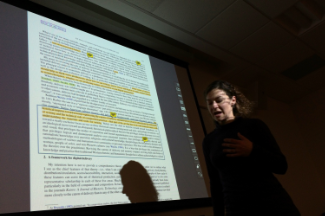Student Remote Learning Technology Needs
If you require an equipment loan (laptop, WiFi hotspot, etc.) in order to complete your academic work this semester, please email askit@amherst.edu or log into AskIT and enter your request directly.
If you require an equipment loan (laptop, WiFi hotspot, etc.) in order to complete your academic work this semester, please email askit@amherst.edu or log into AskIT and enter your request directly.

Additional information about the Amherst College approach, support, and expectations for learning in the Fall of 2020 are available via the Fall Plan 2020.

Whatever your Amherst College related technology need or question please reach out.
You may also find it helpful to review information on how to setup the appropriate VPN connection for your device, and how to connect to college managed I, U and other storage drives. If you need to, also review how to remote desktop.
Teaching assistants, faculty office hours, and other modes of academic support will continue to be available remotely. Please reach out to your faculty member if you have any questions about this and take a look at the Academic Advising & Support website.
Peer Tutoring is available to students, free of charge, who are enrolled in Amherst courses and, for a variety of reasons, find themselves in need of tutorial assistance. The Peer Tutoring Program is overseen by the Office of Student Affairs.
Accessibility Services is the only designated office at the College for students to voluntarily disclose a disability(ies), submit appropriate documentation for verification, and request accommodations. Accessibility Services coordinates and provides accommodations to students with all types of disabilities, in an environment of mutual respect. If you have questions about your accomodations in relation to the transition to a remote, digital learning environment please reach out to accessibility services via email at accessibility@amherst.edu or by phone at 413-542-2337.
The Writing Center will continue to offer students one-on-one support for writing and speaking. WCOnline, the Writing Center's appointment scheduler, is now enabled for remote appointments, and associates can work with you through videoconference, telephone, Google docs, email, or other modes of communication. Consultations on public speaking, including speaking and presenting in digital environments, can be arranged by emailing Susan Daniels. The Writing Center also maintains curated lists of resources on various writing and public speaking topics.
We've put together a guide for Doing Research Remotely, and research help is available (9am - 7pm) via chat, Zoom, and email. Check out our new Research Process guide for a big-picture overview, step-by-step help, and resources.
Renew your own books for additional 3-month loans and bring them back to campus with you (seniors, we'll be in touch), but contact us with any questions. And we're working with your faculty to make print-reserve material accessible.
Many of your faculty will be using moodle as their main communication platform. Make sure that you are checking your Amherst College email as well as your Moodle course sites regularly.
Moodle resources for students.
Most of the software used in classroom labs can also be installed on students’ personal computers.
The IT-maintained Available Software web site describes how to access such software, if available.
The Q Center will continue to offer students individual appointments for support in Quantitative Courses. The appointment confirmation will come with a link to a Zoom meeting room. Students should check with their professors about current TA drop-in hours and faculty office hours.
It is likely that many faculty will be using video conferencing as a way to have synchronous communication with you throughout the remainder of the semester. Your faculty will communicate directly with you about how you will engage in the learning for each course. Below are some common tools and information about how to use them.